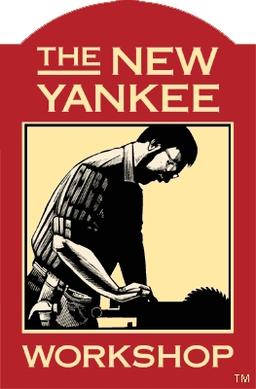Hi there! I’m confused with this one… I’ve got these plywood squares that I had to drill a bunch of holes in. Despite using a low speed on my drill and adding masking tape (below) there’s still pretty nasty tear out on nearly all holes. (EDIT: These are not through holes, this is for crochet square blocking boards. Metal rods which need to stay in place are put into the holes.)

And this is it after removing the masking tape.

What should I do? Thanks in advance!
Did you try backing the plywood with a piece of hardwood while drilling? If you can clamp the two together that will work even better.
Also pull the drill out to clear the flutes just before you pierce the far side. Clogged flutes mean you’re really just punching through, rather than cutting.
I’m sorry I didn’t clarify this in the original post - the holes do not go all the way through as they are for putting metal crochet rods in.
So you’re getting this tearout on the top?!
That’s kinda nuts, never seen it before.
Make sure your drill is sharp, and consider a brad-point.
Drill a small hole all the way through, then switch to the correct size bit and drill half way through from either side.
Try all the options everyone has mentioned to see what works best. There is no one correct answer that works for all situations.
I suspect your drill bit is simply very dull. It’s clearly pushing wood fibers instead of cutting them.
First you should edit the title so it makes sense, then you could try clamping a sacrificial board (MDF, 1/4", dimensional, whatever’s easiest) beneath and running the drill faster but moving slower. You might even try just going back to trying tape but changing your drilling method just to see if that improves anything before killing another piece of wood
Woops! I’ve fixed the title now. I’ll give this a try, thank you.
Sharper drill bit. Play with higher speeds and lower feeds. As said, backer.
This is a little bit like drilling shelf pins holes, of which I’ve done a lot. The thing that ends up working best for me is a plunge router in a jig with a solid carbide down spiral bit. Those are not through holes, though.
I failed to clarify properly, but these are actually not through holes too. The router sounds like a good idea - these blocks are about 10cm x 10cm though, would you still be able to do it with your jig without the router tipping?
Either make the holes before cutting out the blocks or make the jig to hold the block.
My shelf pin jig makes holes about 4" apart about 2" from the edge of the board, so it wouldn’t work for your application. You could certainly make a router jig for your needs though.
Mine is a small plunge router. There are a number of them on the market that should work. Make sure that you can get the bit you need before getting too invested in this idea.
Can you use nails instead of drilling for rods? Drive the nails in and clip off the heads.
Would countersinking the holes impact the function you need from these boards? If not I would just do a shallow countersink.
Otherwise drill a small pilot hole, then follow up with the full size bit.
Fast rotational speed with a slow plunge might help too.
I think countersinking might cause issues. This is for a crochet board that a friend requested. The pins that sit inside might wobble a bit too much. I didn’t realise faster speed would be better, I imagined it would be rougher, thanks for that!
I would clamp a scrap piece underneath your work piece and then drill. Should take care of the tear out better than tape.
The other way to go would be to use a lipped brad point bit or a forstner bit depending on the size of your holes. Those bits have a cutting edge around the circumference of the hole to prevent chatter when starting to drill and to produce a cleaner pass. A good set of brad points will cost you $100 or so but are a great investment imo.
I hadn’t considered the quality of the bits, but that’s a fair point. These are from sets that are probably $25 max, I’ll be sure to grab some higher quality ones, I didn’t realise that would have such an impact on something like drilling holes. Thank you.
No problem! I think you could probably still improve performance with a scrap piece and good clamp pressure before you’d have to spend any money. Good luck!
Have you tried using a Brad Point drill bit?
Difficult to find, yes, but these bits can make virtually tear-free holes in wood. They go in as smoothly as a Forstner bit, no tear-out whatsoever.
I would recommend the Fisch brand, IMO they make a really great set in both imperial and metric. If you are in Canada, Lee Valley also has a great set.
Believe it or not these were made using a brad point bit. Others have mentioned the low budget quality + it becoming dull and I imagine that’s a big cause. Thanks for the fisch recommendation, I have been looking and don’t really know good brands for bits, so that’s really helpful!




